Table of Contents
Introduction
Aspheric lenses are unique lenses that have a non-spherical curvature. They are widely used because they can provide higher-quality imaging effects when compared with traditional spherical lenses. In this article by Noni, we will introduce what are aspheric lenses from their basic definition, compare them to spherical lenses, explain their working principles, and processing methods, list their advantages and disadvantages, and highlight their applications.
What is an Aspherical Lens?
An aspheric lens is a type of lens that differs from the traditional spherical or cylindrical shape. It boasts complex and asymmetrical curves that allow it to correct common lens problems like distortion, peripheral astigmatism, and spherical aberration.
Aspheric lenses have several advantages over conventional lenses, including improved accuracy in the light collection and the ability to eliminate spherical chromatic aberration. Additionally, they have a simple structure that can replace multi-lens systems, reducing weight, volume, and cost. Unlike traditional lenses, aspheric lenses have varying radii of curvature from the center to the surface’s edge. This unique feature enables them to eliminate errors that standard lenses cannot.
Spherical Lenses VS. Aspheric Lenses
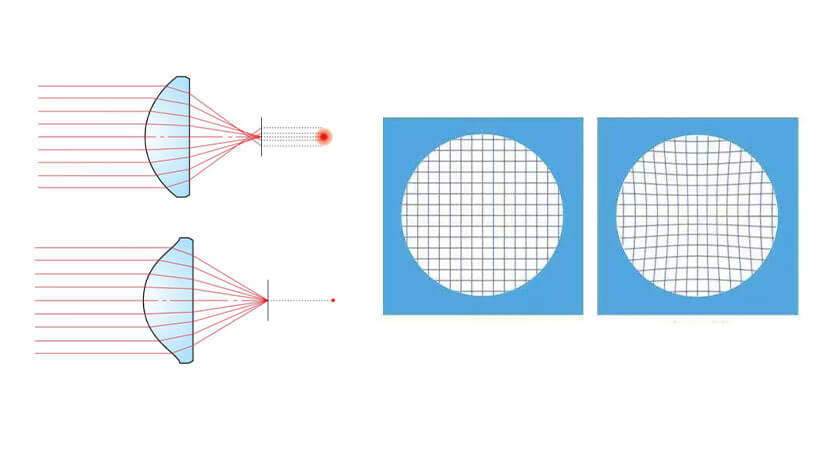
Both spherical and aspheric lenses are common lens types, and the main difference between them is the curvature of the lens.
Spherical lenses have the same curvature, while aspheric lenses have different curvatures. Due to the fixed surface curvature of spherical lenses, they only provide the best image quality in certain situations. Specifically, spherical lenses provide optimal imaging when the object is located at the infinity of the spherical lens.
Aspheric lenses, on the other hand, can be manufactured in a variety of curvatures as needed, so problems such as spherical aberration, distortion, and peripheral astigmatism can be better corrected, making them better adaptable to various imaging needs.
What is the Processing Method of an Aspheric Lens
There are many processing methods for aspheric lenses, the following are three common processing methods:
Precision hot pressing
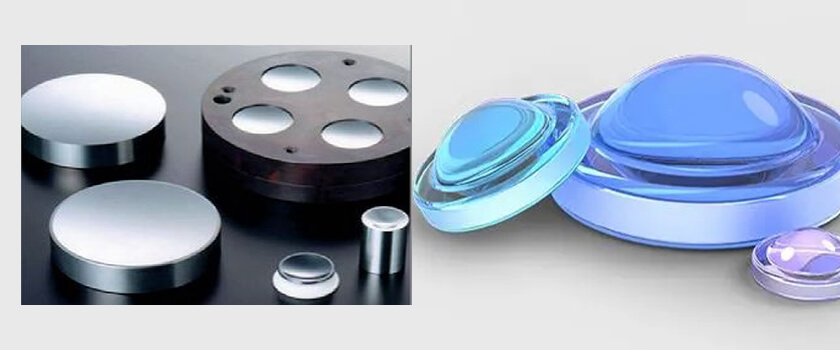
Precision hot pressing is a highly precise manufacturing method that enables the mass production of aspheric lenses with exceptional accuracy and surface quality. By placing the lens material into a heated metal mold and applying high pressure at elevated temperatures, this technique allows for complete control over the shape and surface quality of the resulting lenses.
The greatest advantage of precision hot pressing is its ability to produce high-precision and smooth-surfaced aspheric lenses with sub-micron-level accuracy. Although the use of high-precision metal molds and materials that can withstand high temperatures and pressure may result in higher production costs. Furthermore, this method is ideal for producing relatively simple aspheric lenses due to the simplicity of their shapes.
CNC grinding

Aspheric lens CNC grinding is a highly precise processing method that utilizes CNC machine tools to cut and process aspheric lenses from bulk materials, producing lenses with exceptional shape and surface quality. This technique is widely employed in modern optical manufacturing due to its ability to produce high-precision aspheric lenses.
CNC grinding technology achieves sub-micron level precision in lens manufacturing and allows for more complex designs of aspheric lenses. Additionally, it provides higher production efficiency and superior surface quality compared to other methods, reducing production costs while enhancing lens performance.
Our use of aspheric grinding CNC machine tools to produce lenses results in larger sizes, improved surface quality, and better maintenance of the M-square value of the input beam when compared to corresponding molded aspheric lenses. This technology is particularly suitable for small-batch production and product prototype manufacturing, thereby meeting the needs of diverse industries.
Composite Molding
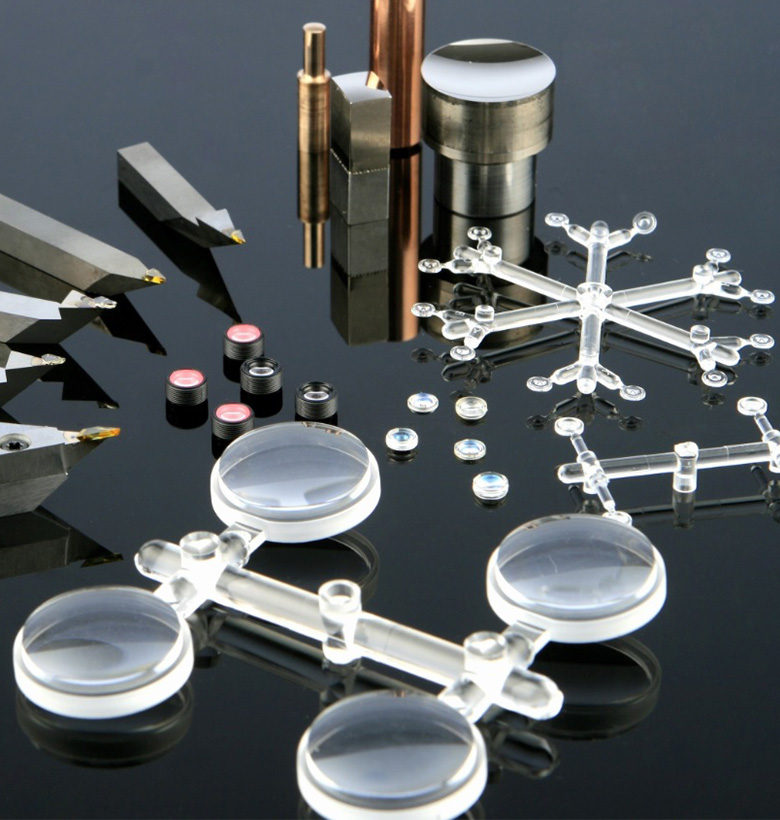
View Noni Custom Molded Plastic Optics
Optical aspheric replication molding technology is a cost-effective and efficient method for manufacturing high-quality aspheric lenses. This technique involves transferring the surface of a master mold onto a base, resulting in the transformation of a spherical surface into an aspherical one. Unlike other aspheric surface processing methods, this technology requires minimal equipment and eliminates the need for substrate polishing, making it ideal for the mass production of sub-mirrors with identical specifications or spliced mirror surfaces.
While optical aspheric surface replication molding technology can achieve high precision and excellent surface quality, it may have limitations in terms of replication accuracy and surface quality. Therefore, it may not be suitable for all types of aspheric lens manufacturing needs. Nonetheless, when used appropriately, this technology serves as a valuable solution for various industries seeking to produce high-quality aspheric lenses efficiently and cost-effectively.
What Are the Benefits of an Aspheric Lens?
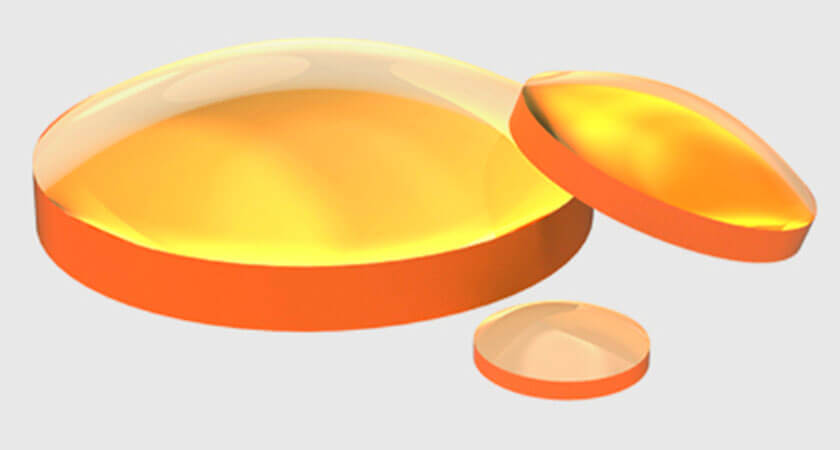
Aspheric lenses can provide higher-quality imaging because they can better correct several problems:
Spherical aberration
Spherical lenses produce spherical aberration in the peripheral region. This means that when light rays pass through the lens, they will be focused on different points due to different angles and positions, resulting in image distortion. Aspherical lenses can correct spherical aberration through complex curves, thus providing more accurate imaging effects.
Distortion
Conventional lenses also produce distortion in the peripheral region. This is due to the shape of the lens limiting how much light can be bent. In contrast, aspheric lenses can freely adjust the curvature as needed, thereby eliminating distortion.
Peripheral astigmatism
Peripheral astigmatism is a common lens problem that produces bright or dark spots in the peripheral areas. This is due to the shape of the lens so that light is scattered in different directions. Aspherical lenses can eliminate marginal astigmatism by adjusting the curvature, thereby improving imaging.
Aspheric Lenses Advantages & Disadvantages
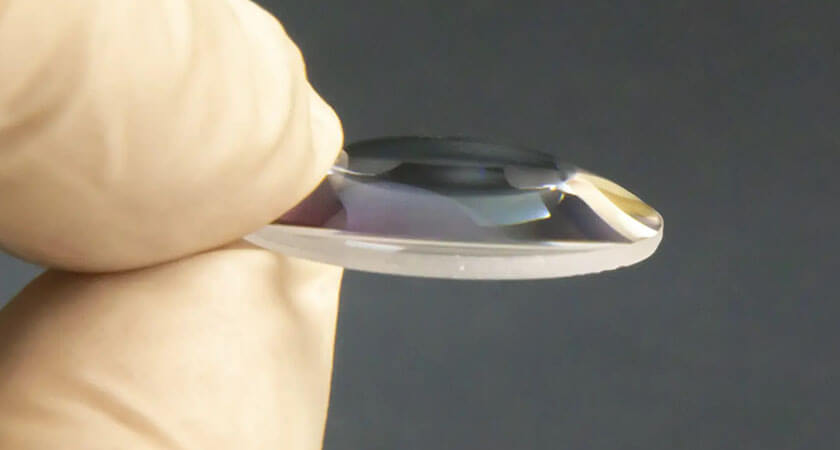
The use of aspheric lenses has two major advantages: one is to improve the imaging quality of the entire optical system; the other is to reduce the weight and size of the finished product. Advantages include a reduced number of back reflections that occur in the system resulting in higher total light transmission, reduced system heating when some kilowatt-level high power light is transmitted, advanced process technology reduces damage to subsurface layers, the spherical surface is precisely polished to improve the collimation accuracy.
Aspheric Lenses Advantages
Compared with traditional spherical lenses, aspheric lenses have the following advantages:
a. More Accurate
Aspheric lenses provide higher-quality imaging and are correct for issues such as spherical aberration, distortion, and peripheral astigmatism. This makes them particularly suitable for applications requiring high-precision imaging, such as astronomy, medicine, and industry.
b. Enlarging the aperture
Since aspheric lenses can freely adjust their curvature as needed, they can add relatively larger apertures while maintaining high imaging quality. This means that aspherical lenses can provide a larger field of view and a wider field of view in a smaller size, making them particularly suitable for photography and video applications that require high resolution.
c. Improve efficiency
Aspherical lenses can be freely adjusted in curvature and shape as required, allowing them to provide higher optical efficiency. This makes them the preferred choice in many application areas, such as laser systems, lighting systems, and optical sensors.
Aspheric Lenses Disadvantages
Aspherical lenses offer many advantages over traditional spherical lenses, such as a more natural field of view and thinner and lighter designs. However, aspherical lenses also have some disadvantages, including:
a. Higher cost
Due to their complex design and manufacturing process, aspheric lenses are usually more expensive than traditional spherical lenses.
b. Prone to optical distortion
Aspheric lenses are designed to better correct spherical distortion, but they are also prone to other types of optical distortion, such as lateral astigmatism and longitudinal astigmatism.
c. High operational requirements
Aspheric lenses require more precise measurements and positioning, thus requiring more skilled operators during fabrication, installation, and adjustment.
d. Poor adaptability to the environment
Aspheric lenses have a more complex surface shape, are more susceptible to contamination and damage, and may require more frequent cleaning and maintenance.
Types of Aspheric Lenses
spheric lenses are commonly used in a variety of optical systems to reduce aberrations and improve image quality. Here are some additional types of aspheric lenses:
Aspherical condenser lens
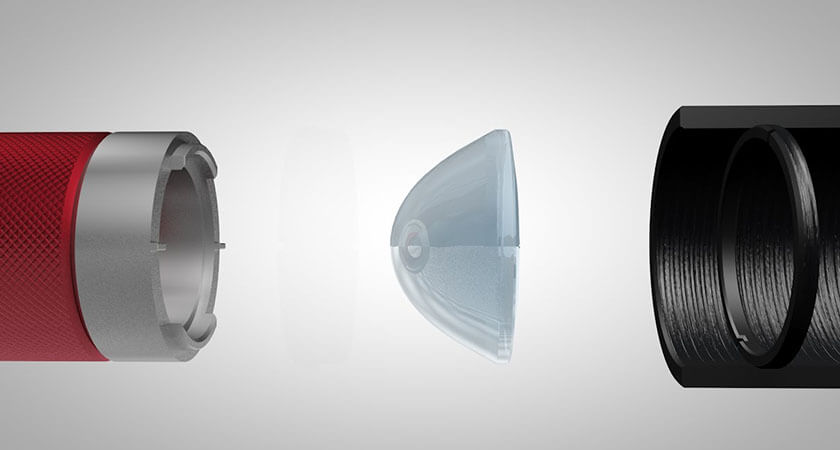
(image from Thorlabs)
Aspheric condenser lenses are single lenses used to concentrate light.
The radius of curvature varies everywhere on one of the surfaces with a height from the optical axis to minimize spherical aberration. The other side is convex or flat.
These lenses can focus light at short focal lengths that cannot be achieved with spherical lenses. Generally, it is made of B270-ultra-clear glass, so it is convenient to realize the manufacture of complex surfaces that are not easy to grind. The design condition of this type of lens is infinity conjugate, and the design wavelength is 587.6nm (yellow helium line). Condenser lenses concentrate light into a projection beam.
Mainly used in projectors, amplifiers, spotlights, and other projection and lighting fields. Two condenser lenses of the same focal length can be combined to form a system with half the focal length of a single lens. Primarily used in high-efficiency illumination systems, aspheric condensers feature excellent aberration correction.
Aspheric lens
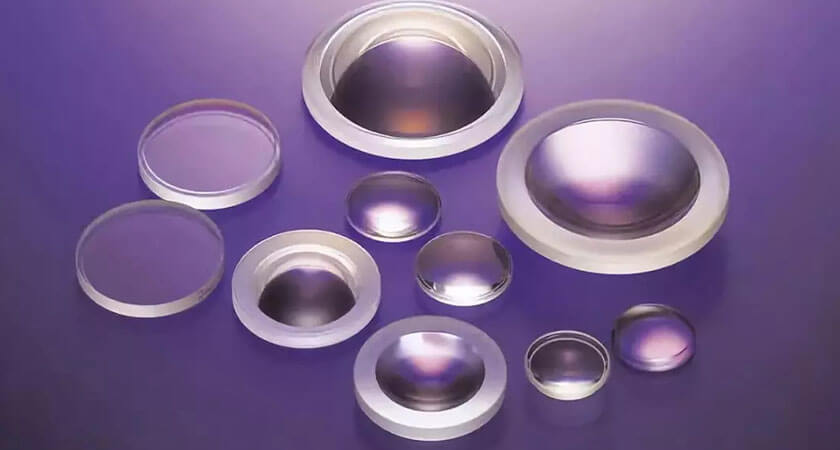
We provide off-axis paraboloid, ellipsoid, hyperboloid, and other aspheric lenses. At the same time, we can also provide aspheric lenses of various infrared materials, such as germanium, zinc selenide, zinc sulfide, and more.
How to Select a Suitable Aspheric Lens
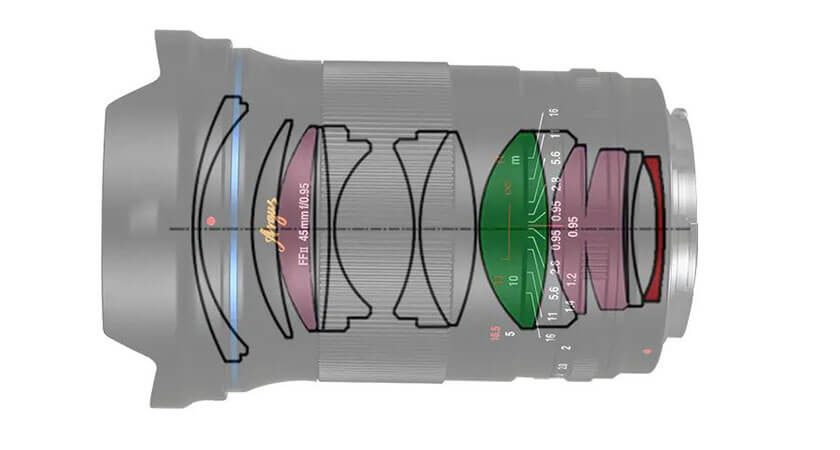
When selecting an aspheric lens, it is necessary to consider aspheric lenses’ advantages and disadvantages to determine which lens is most suitable for a specific application. Based on our experience of decades, the key factors into consideration include volume, quality, and cost. Here, you can check the requirements for different types of lenses as follows:
- Precision glass-molded aspheric lenses are suitable for occasions requiring large quantities, high quality, and high thermal stability;
- Precision polished aspheric lens is suitable for sample making and small batch sample occasions;
- Hybrid-molded aspheric lenses are suitable for wide-spectrum, large-batch, and high-quality occasions;
- Plastic molded aspheric lenses are suitable for occasions with large batches, low cost, lightweight, and low thermal stability requirements.
For the case where customized aspheric lenses are required, factors such as development cost, sample cost, batch price, and delivery cycle also need to be considered.
Application of Aspherical Lenses
Due to its high-precision imaging and targeted design, aspheric lenses are widely used in many application fields. Some of these application areas include:
Aspheric lens in Astronomy

Astronomy is one of the most widely used fields of aspheric lenses. Telescopes and astronomical telescopes require high-precision imaging to observe galaxies and stars, and aspheric lenses can correct spherical aberration and distortion to provide higher-quality imaging.
Aspheric lens in Medicine

Medical imaging also requires high-precision imaging to ensure accurate diagnosis and treatment. Aspherical lenses are widely used in the field of medical imaging, such as intraocular lenses in eye surgery, X-ray imaging systems, and MRI machines.
Aspheric lens in Industry
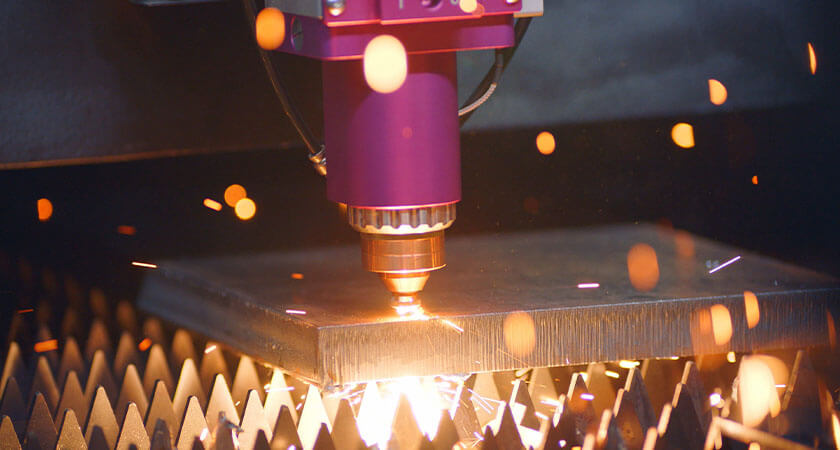
The industrial field also requires high-precision imaging to ensure product quality and efficiency. Aspheric lenses can provide more accurate imaging in applications such as automated manufacturing, machine vision, and laser imaging, thereby increasing production efficiency and reducing costs.
In short, an aspheric lens is a lens that provides higher-quality imaging. They adjust curvature and shape to correct problems such as spherical aberration, distortion, and peripheral astigmatism and have the advantages of greater precision, larger aperture, and improved efficiency. Due to its wide range of applications, aspheric lenses will be more and more widely used in the future.
Conclusion
This article shows basic knowledge about aspheric lens and we hope it can not only offer you a complete explanation about what is a aspheric lens, but also give you some inspiration about its benefits and applications.
Noni is a leading custom optics production and development company with extensive experience in the industry of optical components and systems. Since our establishment in 2014, we have been committed to providing exceptional services to our clients worldwide. Our team comprises experts who have been in the optics field since 2008, ensuring that we deliver top-quality products and reliable services to meet our client’s diverse needs.
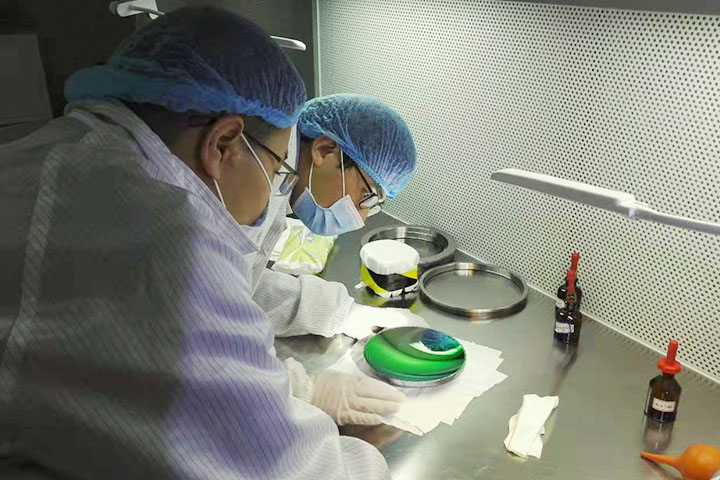
If have particular specifications for aspheric lens or other optics in customization, or you need support in the R&D and manufacturing of tailored optics of higher accuracy and special sizes for your projects or applications, Noni is ready to be a reliable helper with our custom abilities to exceed your expectations via the one-package solution.